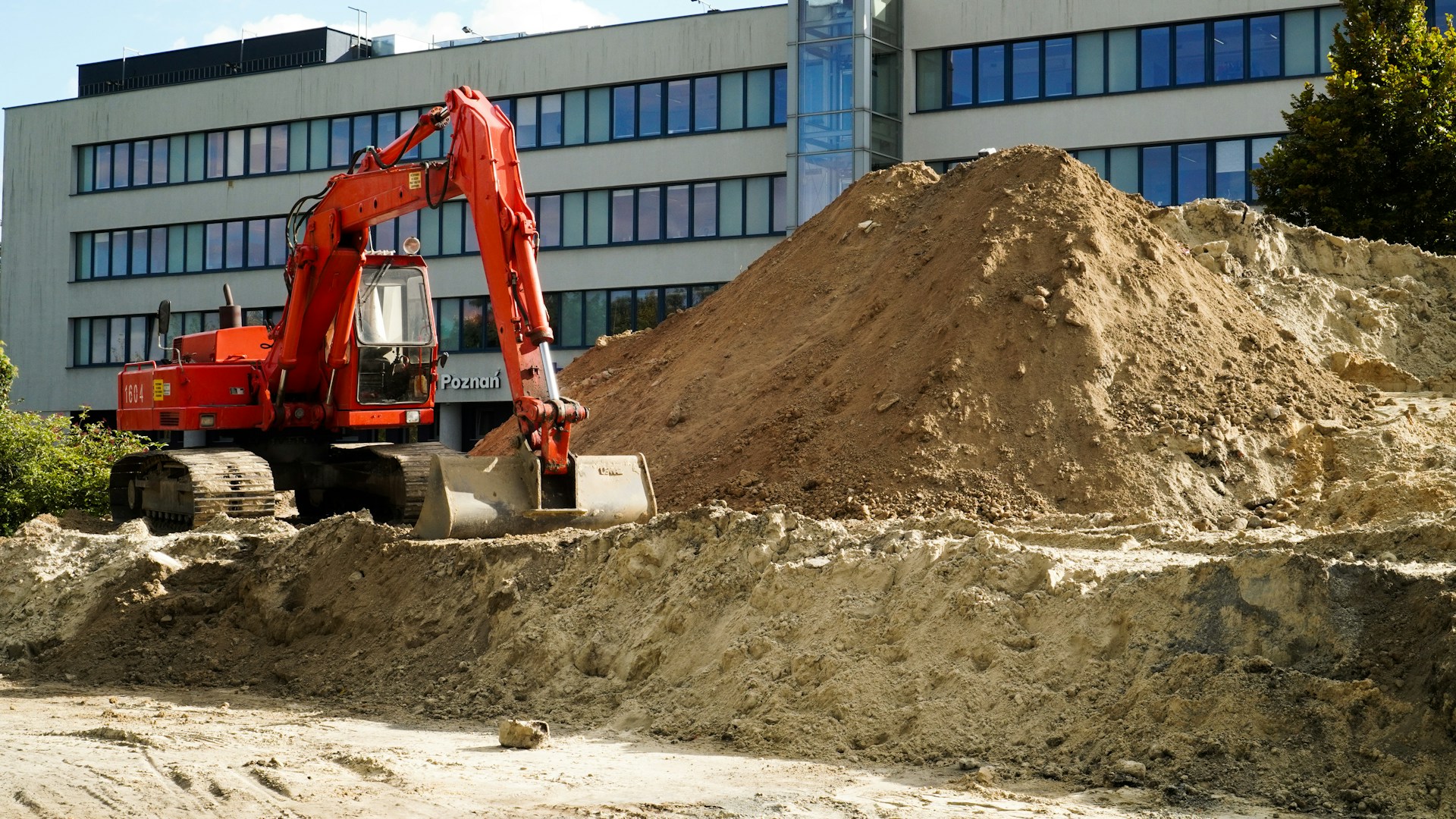A construction project scope is a critical document that defines the detailed description of work to be performed for a specific project. As general contractors, we know that a well-crafted scope serves as the foundation for successful project execution. Without it, determining required tasks and milestones would be nearly impossible, potentially leading to confusion, delays and cost overruns.
At EB3 Construction, we approach scope development as a collaborative process with our clients and key stakeholders. We take the time to thoroughly outline goals and requirements before putting pen to paper. This ensures the us to create a comprehensive scope that provides clarity and direction for all involved parties.
A properly defined scope ensures everyone understands their roles, responsibilities and project objectives from day one. It acts as a roadmap that contractors, suppliers and clients can rely on throughout throughout the construction process. From our experience, investing time upupfront in scope definition pays dividends in smoother project execution down the line.
In this guide’s complex construction landscape, a clear risks of proceeding without a clear scope are simply too high. Cost disputes, schedule delays and quality issues often stem from ambiguous or incomplete scope documents. That’s why we consider scope development to be one of the most crucial steps in the pre-construction phase.
In the following sections, we’ll outline our proven process for creating thorough, actionable construction project scopes. We’ll cover key components practices for clarity and detail and tips for aligning all stakeholders. Whether you’re a developer, property owner or fellow contractor, mastering the art of scope writing is essential for project success.
What Should Be Included in a Construction Project Scope?

A comprehensive construction project scope acts as the blueprint that project, outlining key elements that guide execution and set expectations. We recommend including the following core components:
Project Overview
Begin with a high-level summary that provides context on the project’s background, primary objectives, and overall significance. This overview helps align stakeholders a clear understanding of the project’s purpose and value.
Deliverables and Milestones
Clearly define the tangible outputs and key achievements throughout the project lifecycle. Break down major deliverables into specific, measurable items. Identify critical milestones that mark important phases or achievements, allowing for effective progress tracking.
Schedule and Timeline
Develop a detailed project schedule with specific start and end dates for each phase and task. Consider using att charts to visually represent the timeline and task dependencies. A well-structured schedule helps manage resources and keep the project on track.
Project Management Details
Document the governance structure, roles and responsibilities, and communication protocols. Outline how decisions will be made, issues escalated, and information shared among team members and stakeholders. Clear management processes are vital for smooth project execution.
Technical Specifications
Provide detailed technical information on, methods, and materials to be used. This may include architectural plans, engineering specifications, or construction techniques. Thorlevel of detail here helps prevent misunderstandings and ensures quality standards are met.
Payment Terms and Reporting
Include information on the project budget, payment schedule, and financial reporting requirements. Clearly outline when and how payments will be made, any retainage policies, and the process for approving change orders. Also specify the types status reports.>
| Component | Description |
| Project Overview | Provides context on the project’s background, primary objectives, and overall significance, aligning stakeholders with a clear understanding of the project’s purpose and value. |
| Deliverables and Milestones | Defines tangible outputs and key achievements throughout the project lifecycle, breaking down major deliverables into specific, measurable items and identifying critical milestones for progress tracking. |
| Schedule and Timeline | Includes a detailed project schedule with specific start and end dates for each phase and task, often using charts to visually represent timelines and dependencies. |
| Project Management Details | Documents governance structures, roles, responsibilities, and communication protocols, detailing how decisions are made and issues are escalated. |
| Technical Specifications | Provides detailed technical information, including methods and materials to be used, architectural plans, and engineering specifications to prevent misunderstandings and ensure quality standards. |
| Payment Terms and Reporting | Includes information on the project budget, payment schedule, retainage policies, and process for approving change orders, alongside any required financial reporting. |
By thoroughly addressing these elements in your construction project scope, you create a solid foundation for successful project delivery. This comprehensive approach helps align well-defined scope aligns expectations, facilitates effective communication, and provides a roadmap for achieving project objectives efficiently and within budget constraints.
How Do You Write an Effective Construction Project Scope?
Writing an effective construction scope of work is crucial for project success. We use several key steps to ensure our scopes are comprehensive and prevent issues down the line:
Communicate Early and Often
We start by bringing the entire team together early in the process. This allows us to clearly assign responsibilities and prevent confusion or delays later. During these initial meetings, we make sure everyone understands their role and how it fits into the larger project.
Break Down Complex Objectives
For large or complex projects, we utilize a work breakdown structure (WBS) to improve our planning and scheduling. The WBS helps us break down overarching objectives into manageable tasks and deliverables. This granular view allows for more accurate time and cost estimations.
Get Written Sign-Offs
Before finalizing the scope, we obtain written sign-offs from all team members, clients, and key stakeholders. This crucial step ensures everyone is on the same page regarding responsibilities, deliverables, and expectations. Having this documented agreement helps prevent disputes later in the project.
Prevent Scope Creep
By clearly defining the project boundaries in our scope document, we create a strong defense against scope creep. We make it clear which tasks and deliverables are included – and just as importantly, which are not. This allows us to easily identify and address any requests that fall outside the agreed-upon scope.
Review and Refine
Before finalizing, we conduct a thorough review of the scope with our team. We look for any ambiguities or potential issues and refine the language as needed. This final check helps ensure our scope provides a solid foundation for project execution.
By following these steps, we create construction scopes that set our projects up for success from day one. The time invested upfront in developing a clear, comprehensive scope pays dividends throughout the project lifecycle.
| Component | Description |
|---|---|
| Project Overview | High-level summary of the project’s background, primary objectives, and significance. |
| Deliverables and Milestones | Clearly defined tangible outputs and key achievements with specific, measurable items and critical milestones. |
| Schedule and Timeline | Detailed project schedule with specific start and end dates for each phase and task. |
| Project Management Details | Governance structure, roles, responsibilities, and communication protocols. |
| Technical Specifications | Detailed technical information on methods, materials, and construction techniques. |
| Payment Terms and Reporting | Project budget, payment schedule, and financial reporting requirements. |
What Are the Best Practices for Construction Project Scope Writing?

At EB3 Construction, we’ve found several best practices that can significantly improve the quality and effectiveness of a construction scope of work document:
Use Strong Visuals
We incorporate project images, mock-ups, diagrams and graphs to help stakeholders visualize the project. Visual representations can simplify complex processes and structures in ways that words alone cannot. For example, we often include 3D renderings of the finished project alongside phased construction diagrams to illustrate how the build will progress.
Use Clear, Straightforward Language
We aim to use clear, concise language and avoid technical jargon whenever possible. When industry-specific terms are necessary, we provide clear explanations. For instance, instead of just saying ‘install MEP systems’, we break it down: ‘Install mechanical (HVAC), electrical, and plumbing systems, including specific equipment models and locations as detailed in the attached plans.’
Define Realistic Goals
We establish goals that are achievable within the given constraints of time, resources, and budget. This means carefully analyzing project requirements against available resources. For example, we may state: ‘Complete structural steel erection within 6 weeks, utilizing a crew of 10 workers and 2 cranes, weather permitting.’
Set Clear Expectations
Our scope documents outline every task, responsibility, and deliverable, specifying who is responsible for what to ensure accountability. We create detailed responsibility matrices that clearly delineate the roles of the general contractor, subcontractors, and other stakeholders for each project phase.
Ensure Accountability
We build in checkpoints and approvals throughout the project timeline. This allows us to track progress, ensure quality, and address any issues promptly. For instance, we might specify: ‘Foundation work to be inspected and approved by structural engineer before proceeding to framing stage.’
By adhering to these best practices, we at EB3 Construction create scope of work documents that serve as clear roadmaps for project success, minimizing misunderstandings and disputes while maximizing efficiency and quality in project delivery.
How Can You Prevent Scope Creep in Construction Projects?
One of the primary advantages of a detailed scope of work is preventing scope creep—when extra tasks are added to the original project scope during execution. To avoid this common pitfall, construction project managers should take several proactive steps:
Clearly Define Project Boundaries
Distinctly define project boundaries and deliverables in your scope of work document. This allows unplanned changes to be immediately identified and addressed. Be as specific as possible about what is and is not included in the project scope.
Establish a Formal Change Request Process
Implement a structured process for any modifications to the original scope. This ensures transparency and mutual agreement between all parties. A typical change request process includes:
- Submitting a formal change request form
- Evaluating the impact on timeline, budget and resources
- Getting approvals from keyeholder approval
- Updating project documentation
Get Signatures on the Scope Document
Have clients and subcontractors sign the final scope of work document. This confirms their understanding and agreement to the defined project parameters. It also provides a paper trail if disputes arise later.
Monitor Against the SOW
Regularly monitor the project’s progress against the timeline and techniques outlined in your scope of work. This allows you to quickly identify any deviations. Use project management software to track tasks, milestones and resource allocation in real-time.
Use Change Orders for Additions
When additions to the original scope are approved, use formal change orders. These should clearly spell out any adjustextensions or resource changes needed to accommodate the new work work.
By implementing these scope management practices, construction project managers can significantly reduce the risk of scope creep derailing their projects. While changes are sometimes inevitable, having a structured approach allows you to control modifications and keep stakeholders aligned throughout the project lifecycle.
Conclusion: Creating a Winning Construction Project Scope

A well-crafted construction project scope is essential for project success, providing clarity, preventing scope creep, and managing stakeholder expectations. By including key elements like project overview, deliverables, timeline, and management details, and following best practices such as using clear language and strong visuals, we can create an effective scope document that sets the foundation for successful execution.
Remember to get sign the scope of work is more than just a formality – it’s a critical tool for aligning all parties and guiding the project from start to finish. Taking the time to develop a comprehensive, clear scope pays dividends throughout the construction process. It helps prevent misunderstandings, reduces the risk of disputes, and ultimately leads to smoother project delivery.
To create a winning scope, be sure to:
- Communicate thoroughly with your team and assign assigned responsibilities
- Break down objectives and deliverables in detail
- Use clear, straightlanguage that all stakeholders can understand
- Include strong visuals to illustrate key concepts
- Set realistic, achievable goals
- Get sign-offs from all relevant parties
With these approaches, you’ll create a solid foundation for successful project planning, execution and delivery. The effort invested in scope development upimproved efficiency, reduced risks, and ultimately a higher quality end result that meets client expectations.
Ensure your project’s success from day one by partnering with EB3 Construction to craft a rock-solid scope. Contact our team today.




